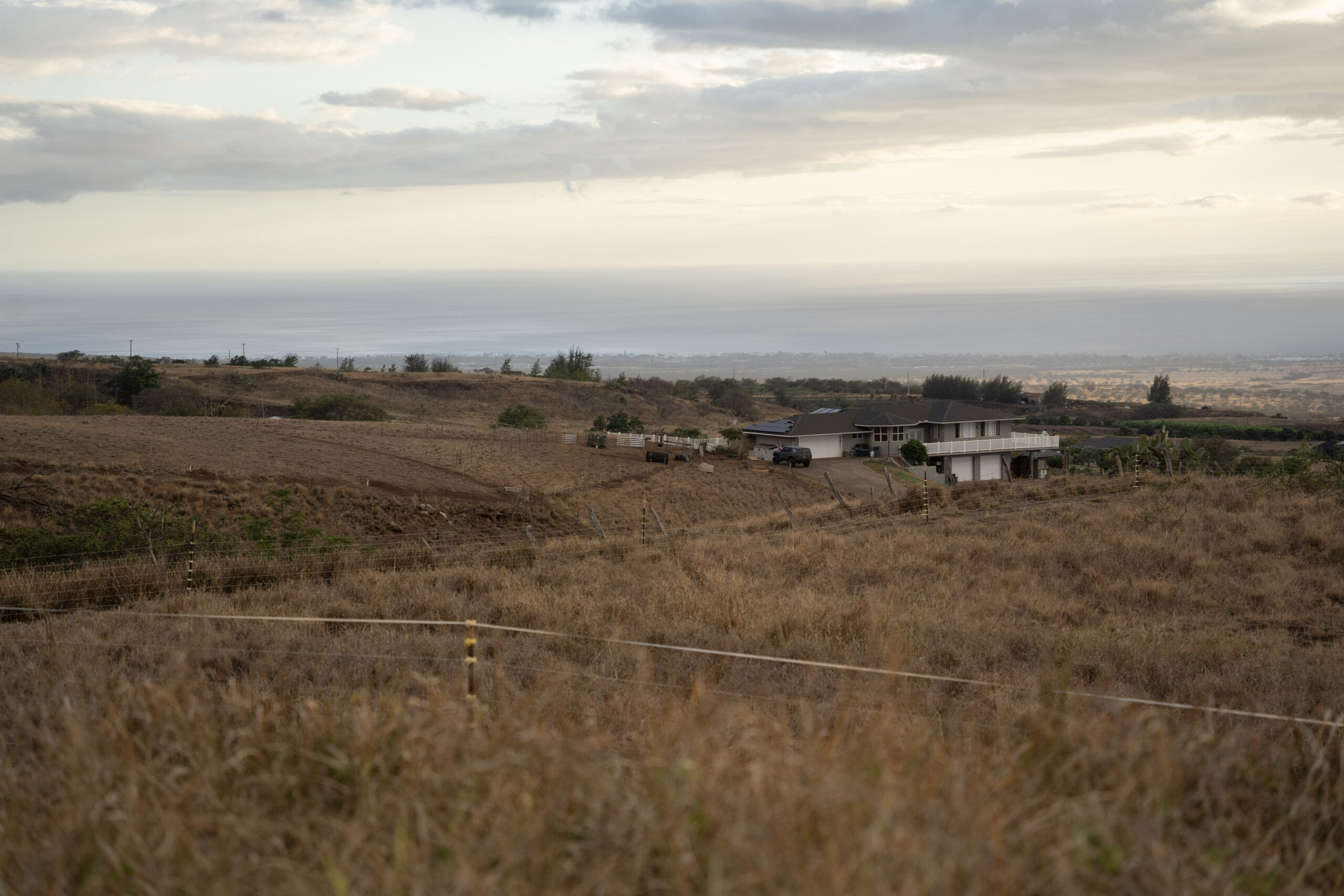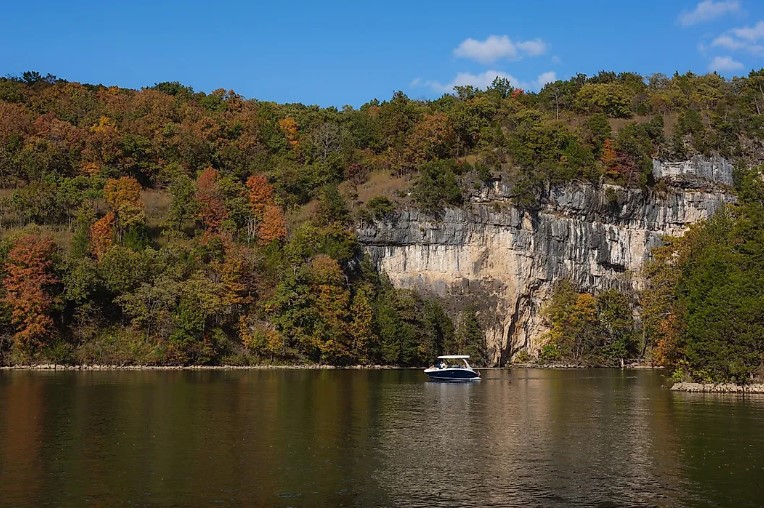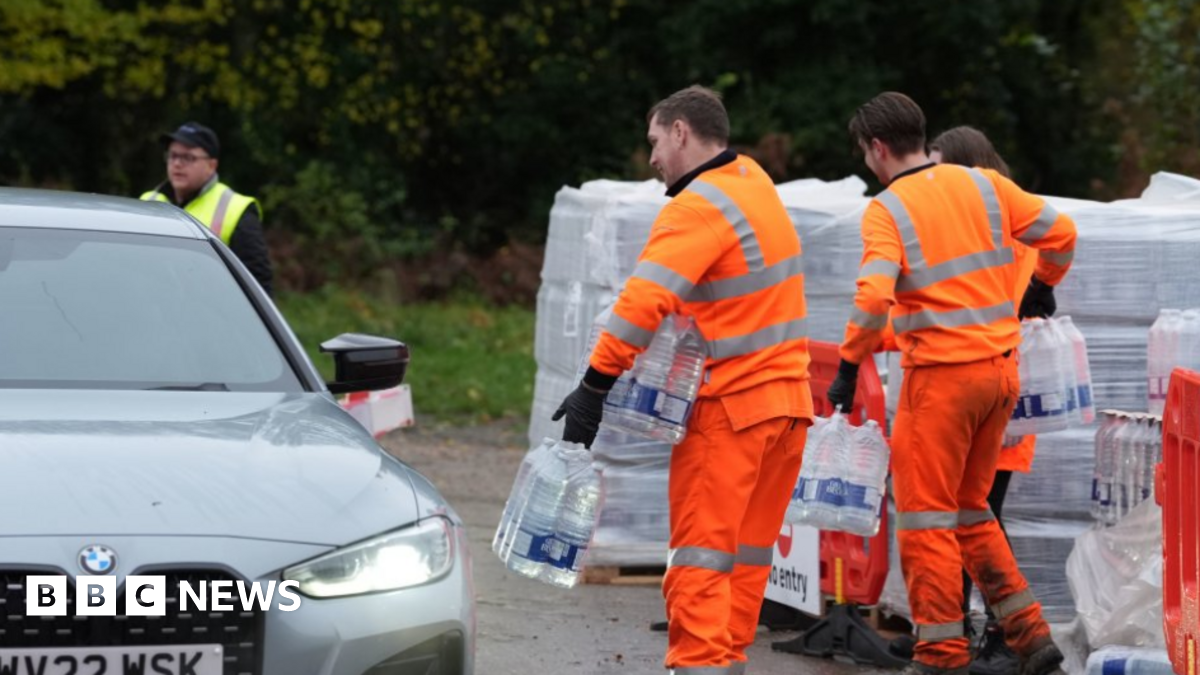Maui County plans more wells, system upgrades to meet Upcountry’s water issues, growing demand – Maui Now

Report on Water Scarcity and Sustainable Management Strategies in Maui County
Executive Summary
Maui County is confronting a severe water crisis, exacerbated by prolonged drought conditions consistent with Hawai‘i’s third-driest season in 30 years. With over 94% of the county experiencing drought, the Upcountry region is particularly vulnerable due to its high dependency on rain-fed surface water. In response, Maui County is implementing a multi-faceted strategy focused on developing new water sources, upgrading existing infrastructure, and enhancing system resilience. These initiatives are critical for addressing the immediate water shortage and aligning with long-term sustainability objectives, particularly the United Nations Sustainable Development Goals (SDGs), including SDG 6 (Clean Water and Sanitation), SDG 11 (Sustainable Cities and Communities), SDG 13 (Climate Action), and SDG 15 (Life on Land).
Analysis of Water System Vulnerabilities and Demand
Impact of Drought and Climate Change
Persistent drought conditions have led to mandatory water restrictions in Upcountry Maui, with the Department of Water Supply recently declaring Stage 2 and Stage 3 water shortages. This indicates that water demand is exceeding supply by 16% to over 31%. The increasing frequency and duration of droughts underscore the region’s vulnerability to climate change, directly impacting progress toward SDG 13 (Climate Action) by necessitating urgent adaptation measures. The reliance of the Upcountry system on surface water (68%) makes it significantly less resilient than the groundwater-dependent systems in Central and West Maui.
Current and Projected Water Deficit
The water supply deficit is a critical challenge to achieving SDG 6 (Clean Water and Sanitation). Current peak demand in Upcountry is 10.1 million gallons per day (mgd), exceeding the reliable supply of 9.7 mgd. This gap is projected to widen significantly due to population growth and development, which supports SDG 11 (Sustainable Cities and Communities). Future water needs include:
- 2.16 mgd for 1,424 pending water meter applications.
- 4.5 mgd for the anticipated full buildout under the community plan.
- 9.0 mgd requested by the Department of Hawaiian Home Lands.
The Maui Island Water Use and Development Plan projects that by 2035, Upcountry’s demand will reach 15.7 mgd, highlighting the urgent need for sustainable water resource management.
Strategic Initiatives for Water Security and Sustainability
Infrastructure Modernization and Enhancement
To improve water treatment and storage capacity, the county is undertaking several key infrastructure projects. These upgrades are fundamental to building resilient infrastructure as outlined in SDG 11 and improving water management under SDG 6.
- Kamole Treatment Plant: A $5 million filter replacement will increase treatment capacity from 4 mgd to 5.5 mgd.
- New Kamole Reservoirs: A proposed $25 million project to construct two reservoirs with a combined capacity of 140 million gallons will capture high flows, reduce water loss from turbidity, and enhance overall system reliability.
- Olinda Treatment Plant: A planned change in the disinfection process will allow for the integration of water from different plants, increasing operational flexibility.
Development of Groundwater Resources
A primary strategy to reduce climate vulnerability is shifting from surface water to more reliable groundwater sources. The county plans to develop six wells in the Makawao aquifer, which has a sustainable yield of 7 mgd. This diversification directly supports the goal of ensuring sustainable water withdrawals and supply (SDG 6).
- Hoku Nui Well (Existing): Purchase of an agricultural well with a 1.15 mgd capacity.
- Pi‘iholo Well (Existing): Lease of an unused well with a 0.67 mgd capacity.
- Kalialinui Well (Existing): Lease of an agricultural well with a 0.96 mgd capacity.
- Kula Kai Well (Proposed): A new well to be drilled on purchased land with a projected capacity of 0.96 mgd.
- Kealaloa Well (Proposed): A partnership with the state to develop a well with a 0.96 mgd capacity.
- Kula Ridge Well (Proposed): A potential new well on county land with a 0.96 mgd capacity.
These projects, with timelines ranging from one to ten years, could increase total capacity by up to 7.76 mgd, helping meet projected demand and creating a more resilient water system.
System Interconnectivity and Resilience
The county is exploring connecting the Upcountry and Central Maui water systems. This initiative would create an integrated network capable of sharing resources during droughts or emergencies, significantly enhancing regional resilience and ensuring equitable water access, a core tenet of SDG 6 and SDG 11.
Ecological Restoration and Community Action
Wildfire Risk and Watershed Health
The dry landscape has elevated the risk of wildfires, a critical threat to community safety and ecosystems. Water restrictions during red flag warnings have hampered residents’ ability to mitigate fire risk, highlighting a dangerous intersection of climate impacts. This situation underscores the need for integrated strategies that address both water scarcity and climate-related disasters (SDG 13).
The Role of Watershed Restoration in Water Security
Community-led efforts, such as the Kula Community Watershed Alliance’s initiative to remove invasive wattle trees, are vital. These actions align with SDG 15 (Life on Land) by protecting and restoring terrestrial ecosystems. Healthy native forests are essential for groundwater recharge and maintaining the water cycle, as reflected in the Hawaiian adage, “Hahai nō ka ua i ka ululāʻau” (the rain follows the forest). Investing in watershed restoration is a nature-based solution that provides a sustainable, long-term foundation for the county’s water supply, complementing infrastructure-heavy projects and ensuring a holistic approach to achieving water security.
1. Which SDGs are addressed or connected to the issues highlighted in the article?
The following Sustainable Development Goals (SDGs) are relevant to the article:
-
SDG 6: Clean Water and Sanitation
The core theme of the article is the severe water shortage in Maui, particularly Upcountry. It details the challenges of water supply, the impact of drought on residents, and the county’s efforts to ensure a reliable and safe water supply through infrastructure projects like new wells, treatment plant upgrades, and reservoirs. This directly addresses the goal of ensuring the availability and sustainable management of water.
-
SDG 11: Sustainable Cities and Communities
The article discusses the resilience of the Upcountry community in the face of natural disasters like droughts and wildfires. It highlights the need for resilient infrastructure, such as backup power for water pumps, which failed during the 2023 wildfires. The county’s long-term planning, detailed in the “Maui Island Water Use and Development Plan,” aims to manage resources to accommodate population growth and make the community more sustainable and safe.
-
SDG 13: Climate Action
The article explicitly links the water crisis to climate change, noting that Maui experienced its “third-driest season in the last 30 years” and that residents observe droughts lasting for “longer periods now than before.” The county’s actions to find new water sources that are not dependent on rain are a direct response and adaptation strategy to the impacts of climate change.
-
SDG 15: Life on Land
The article touches upon the health of terrestrial ecosystems. It mentions the impact of drought on native flora like the “lama, or Hawaiian ebony,” which is “teetering on the edge of dying out.” Furthermore, it highlights the work of the Kula Community Watershed Alliance in removing invasive species and restoring the landscape with native plants, emphasizing the Hawaiian adage, “the rain follows the forest,” which connects ecosystem health directly to water availability and combating land degradation.
2. What specific targets under those SDGs can be identified based on the article’s content?
Based on the article, the following specific SDG targets can be identified:
-
Target 6.1: Achieve universal and equitable access to safe and affordable drinking water for all.
The article highlights a significant gap in water access, evidenced by the “1,424 applicants seeking 3,612 water meters Upcountry.” This waiting list shows that access is not universal. The county’s efforts to increase water supply are aimed at eventually meeting this demand.
-
Target 6.4: Substantially increase water-use efficiency and ensure sustainable withdrawals to address water scarcity.
The entire article is centered on addressing water scarcity. The implementation of “Stage 3” and “Stage 2” water shortage restrictions, which include banning lawn watering and car washing, are direct measures to increase efficiency and manage demand. The county’s plan to drill new wells is balanced against the “sustainable yield of 7 mgd” of the Makawao aquifer, showing a focus on sustainable withdrawals.
-
Target 6.5: Implement integrated water resources management.
The county’s strategy involves managing a mix of surface water and groundwater. The proposal to connect the “Central Maui system to the Upcountry system” is a clear example of integrated management, allowing for resource sharing between different areas to enhance overall system reliability during droughts.
-
Target 11.5: Significantly reduce the number of people affected by disasters, including water-related disasters.
The article references the 2023 wildfires, where the “lack of backup power for critical pumps hampered firefighting efforts.” The subsequent investment in “generators for Kula” is a direct action to strengthen infrastructure and reduce the community’s vulnerability to future disasters like fires, which are exacerbated by drought conditions.
-
Target 13.1: Strengthen resilience and adaptive capacity to climate-related hazards and natural disasters.
Maui’s water shortage is presented as a climate-related hazard. The county’s comprehensive plan to find “new sources and solutions that aren’t dependent on rain,” such as drilling for groundwater and building large reservoirs to “capture high flows,” represents a significant effort to build resilience and adapt to the increasing frequency and severity of droughts.
-
Target 15.1: Ensure the conservation, restoration and sustainable use of terrestrial and inland freshwater ecosystems.
The work of the Kula Community Watershed Alliance to “remove invasive wattle trees” and restore the area with native plants is a direct effort to restore a local ecosystem. The article supports this by quoting the belief that watershed restoration is critical because “the less native forest… the less rain, surface water and groundwater recharge there will be.”
-
Target 15.3: Combat desertification, restore degraded land and soil.
The article describes the landscape as “dry and brown,” “parched,” and “crispy,” which are indicators of land degradation and desertification due to prolonged drought. The community’s efforts to plant native species in “Kula’s burn scars” is a direct action aimed at restoring degraded land.
3. Are there any indicators mentioned or implied in the article that can be used to measure progress towards the identified targets?
The article provides several quantitative and qualitative indicators that can be used to measure progress:
-
Water Stress Levels: The article provides specific data on the gap between water demand and supply. Progress can be measured by tracking the reduction in this gap. Indicators include:
- Current water deficit: “At peak demand, Upcountry customers use 10.1 million gallons of water per day, exceeding the reliable supply of 9.7 mgd by 4%.”
- Water shortage stages: Progress would be a reduction in the frequency and duration of Stage 2 (“demand exceeds supply by 16% to 30%”) and Stage 3 (“demand exceeds supply by 31% or more”) declarations.
-
Access to Water: The number of people waiting for a water connection is a direct indicator of access.
- Indicator: The number of applicants on the water meter list (“1,424 applicants”). Progress would be the reduction of this waiting list.
-
Water Supply Capacity: The county’s projects have specific capacity goals that serve as clear indicators of progress.
- Treatment plant capacity: Increase from “4 mgd to 5.5 mgd” at the Kamole plant.
- Reservoir capacity: Construction of new reservoirs with a “combined capacity of 140 million gallons.”
- New well capacity: The total potential increase in capacity from new and acquired wells, which “could increase capacity by 7.76 mgd.”
-
Sustainable Water Withdrawal: The article provides a benchmark for sustainability.
- Indicator: The amount of water pumped from the Makawao aquifer compared to its “sustainable yield of 7 mgd.”
-
Climate Data: The article uses climate data as an indicator of the problem’s severity.
- Indicator: Rainfall levels compared to historical averages (e.g., “lower-than-average rainfall” and “third-driest season in the last 30 years”).
-
Ecosystem Restoration: Progress in ecosystem health can be tracked through community actions.
- Indicator: The area of land where invasive species like “wattle trees” have been removed and the number of native plants established in restoration areas like “Kula’s burn scars.”
4. Create a table with three columns titled ‘SDGs, Targets and Indicators” to present the findings from analyzing the article. In this table, list the Sustainable Development Goals (SDGs), their corresponding targets, and the specific indicators identified in the article.
| SDGs | Targets | Indicators |
|---|---|---|
| SDG 6: Clean Water and Sanitation |
6.1: Achieve universal and equitable access to safe and affordable drinking water.
6.4: Increase water-use efficiency and ensure sustainable withdrawals. 6.5: Implement integrated water resources management. |
– Number of applicants on the water meter waiting list (1,424). – Daily water demand (10.1 mgd) vs. reliable supply (9.7 mgd). – Frequency and level of water shortage stages (Stage 2 & 3). – Pumping rates vs. the aquifer’s sustainable yield (7 mgd). – Increased capacity of treatment plants (from 4 to 5.5 mgd). – Progress on connecting Central Maui and Upcountry water systems. |
| SDG 11: Sustainable Cities and Communities | 11.5: Reduce the number of people affected by disasters, including water-related disasters. |
– Investment in disaster-resilient infrastructure (e.g., purchase of generators for water pumps). – Implementation of the Maui Island Water Use and Development Plan. |
| SDG 13: Climate Action | 13.1: Strengthen resilience and adaptive capacity to climate-related hazards. |
– Rainfall data compared to 30-year averages (“third-driest season”). – Investment in water infrastructure not dependent on rainfall (e.g., new wells, reservoirs). – Total increase in water storage and supply capacity (e.g., 140 million gallon reservoirs). |
| SDG 15: Life on Land |
15.1: Ensure the conservation and restoration of terrestrial and inland freshwater ecosystems.
15.3: Combat desertification and restore degraded land. |
– Reports of native flora health (e.g., Hawaiian ebony “teetering” on dying). – Area of invasive species (wattle trees) removed. – Number of native plants grown and planted to restore burn scars and degraded landscapes. |
Source: mauinow.com
What is Your Reaction?
 Like
0
Like
0
 Dislike
0
Dislike
0
 Love
0
Love
0
 Funny
0
Funny
0
 Angry
0
Angry
0
 Sad
0
Sad
0
 Wow
0
Wow
0




















































.jpg.webp?itok=0ZsAnae9#)



















.jpg?#)







